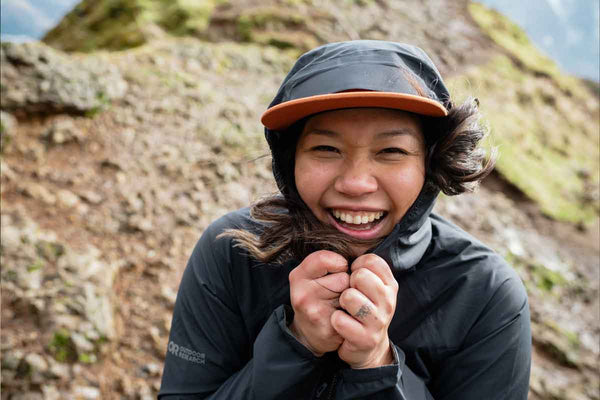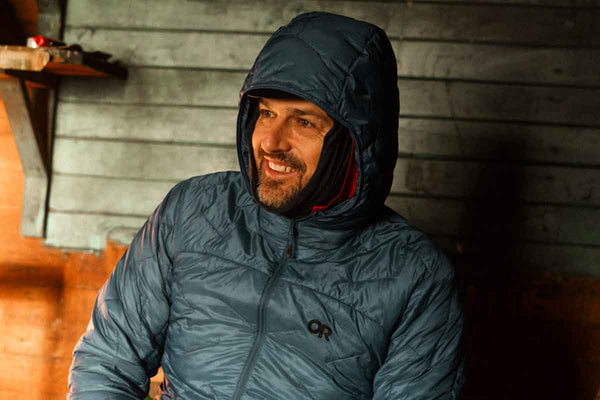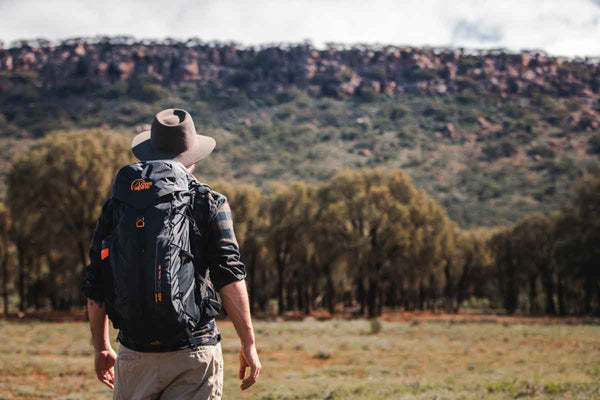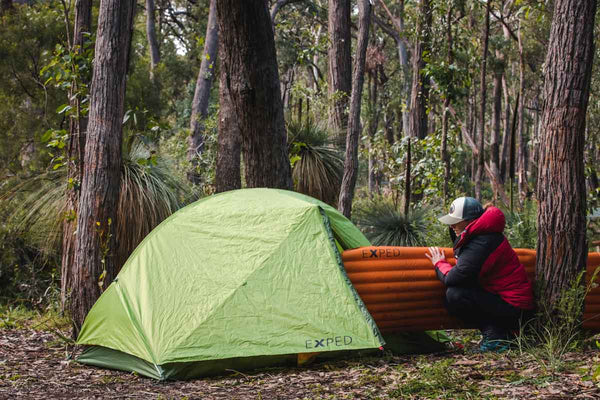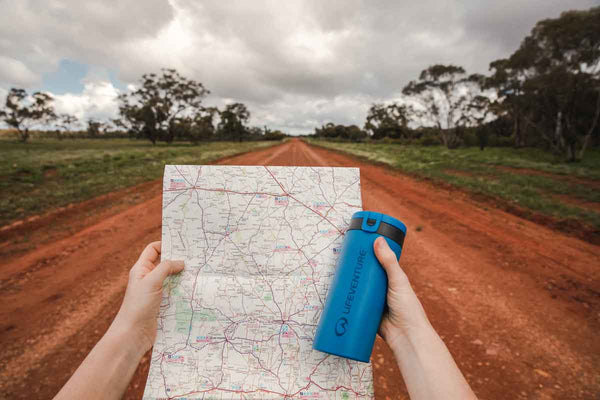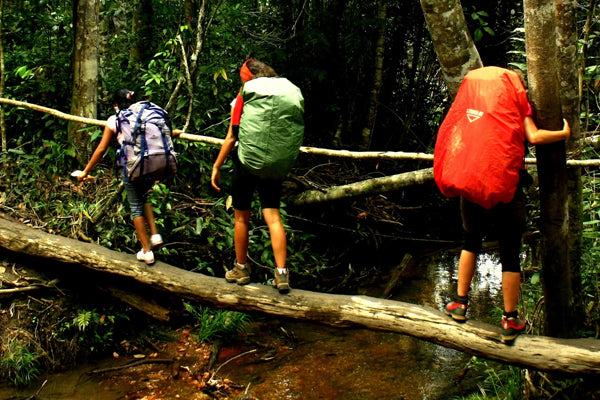
Threshold of a Lost World
Jarrad Barnes is has been fascinated by South America ever since he was about 4, when he saw a picture of Peru on Playschool one afternoon. He recently completed his BA in Spanish and Latin American studies, and is back working for Trek & Travel to finance his next expedition. (He'll be here for a long time.) He loves writing and is happy to share lengthy articles with the Marketing & Web Coordinator in the vain hope of getting more of her amazing carrot cake.
It's a rare moment that takes my breath away (in an emotional, quasi-spiritual way, that is), sitting on what could well be the edge of the known world, staring out into an endless jungle, eyes following the cliffs as they join the horizon, watching clouds from Brazil flow fluffily down into Guyana before vanishing, wraith-like, up the valley into Venezuela. Here I sit and I am breathless. The Brazilian girl next to me is crying, and she's a strong soul. Here I sit on the threshold, on the edge of nowhere, swaddled in cloud and planted firmly to the earth. Here I sit and forget the world.
~ ~ ~
Venezuela's table-top mountains are the stuff of legend and fairytale, most famously depicted in Sir Arthur Conan Doyle's timeless "The Lost World" and, more recently, in the fun and family-friendly Pixar production of "Up". We hiked for two and a half days to get here, Roraima Tepui, the largest of the main range of tepuis ("mountain" in the local Pemon tongue).
Depending on who you believe (for instance, international geographers or the Venezuelan government - take your pick), Roraima stands somewhere between 2,700 and 2,850 metres above sea level. Straddling three countries - Venezuela, Brazil and Guyana - along with Angel Falls and the Orinoco Delta, it is one of the most frequented sites in the country - by international visitors and locals alike. Venezuela claims the mountain as its own by virtue of having both the largest area of it within its borders and the safest rope-free access to the top. Sitting on the frontier which separates Venezuela's vast grassland, La Gran Sabana, and Guyana's dense rainforest, Roraima is a world within a world, a slice of prehistory which time has seen fit not to change. Around two-thirds of all species found on the top of the tepuis is endemic to their summits, isolated for milennia from the jungle floor and savannah below them. If anywhere exists in the world where dinosaurs might still roam, this is it. Conan Doyle might not have been so wrong.
"So tomorrow we disappear into the unknown … I have no doubt … that we are really on the eve of some most remarkable experiences" - Sir Arthur Conan Doyle, The Lost World
~~~
Our first couple of days' hiking were not particularly entrancing; traipsing through grassland, crossing a handful of rivers (by both log bridge and barefoot through fast-flowing water across slippery rocks, hoisting a full pack), plagued by puri puri(blood-sucking flies whose bites itch for days, nastier than even Amazonian sandflies), passing a church which looked like it had been plucked from Spain's Camino de Santiago and planted on a Venezuelan hillside just for kicks, and guided steadily onwards by the twin peaks of Kukenan and our destination, the mysterious, perpetually-cloud-cloaked Roraima.
On the afternoon of the second day we reached the cliffs of Roraima, already sporting a cloudy tablecloth and quickly covering our base camp with the descending darkness, sleep beckoning before the long haul up when we awoke. On the morning of the third day one of the girls from my group rustled our tent door excitedly, her voice a high-pitched whisper, "You have to come and see this!" The sun was rising from the east (as you might expect), directly behind the imposing cliffs, casting a soft morning glow across the Gran Sabana, alighting gently on the prow of Kukenan, slowly working its way, caressing, along the length of its cliffs before finally working its way onto Roraima as it poked its golden brow above our destination.
From base camp to our 'hotel' (a rocky overhang affording us sufficient protection from the elements) was a climb of roughly one thousand vertical metres, a two- to four-hour trek through cloud forest, under cliffs hundreds of metres high, over slippery rocks andthrough wet, wet, waterfalls. After the last of our group made it to our residence we headed out to a cliff-edge which Riley, our guide, hoped would give us clear views across to Guyana. And what a view! As over a dozen waterfalls cascaded into the valley below, feeding into the rivers which keep this land alive, as the clouds rolled over and down and slowly filled up the valley, I sat motionless, the materialistic gear junkie within me forgotten and, in its place, nothing but the view. Riley would later tell us that we were lucky, that some people can sit at that same spot for days and not see what we saw. Luck or not, if I had to keep one vision, and only one, for the rest of my life, up until this day, that would be it.
Our first full day on top was all about the talking point of Roraima: the triple point. The triple point is a cement pyramid located at roughly the correct coordinates for the point at which Venezuela, Brazil and Guyana meet. It is a concrete pyramid surrounded by grey rocks and hikers trying to stand in all three countries at once. Frankly, I don't see the point, so I'll leave it there. Far more incredible was the Crystal Valley, a small riverbed littered with perfectly-formed quartz crystals, or The Pit, a gaping hole in the rock filled with a pool deep enough to jump into, fed by Roraima's mountaintop streams. The whole day we were followed by a creeping mist and a rain which never poured but threatened to soak into our bones (thank goodness for Gore-Tex!). There are no signposts on Roraima, no markers, barely a cairn. The only way to find your way is to follow a guide or to try your luck with the footprints in the pink sand paths or the sometimes-well-worn trails of slightly-faded rock. In a heavy mist and with no knowledge of the area, it's incredibly easy to become disoriented and lost, especially when your only points of reference are flashes in the distance which you hope are other hikers' rain jackets. It's still a wilderness, and should be treated with the respect it is due.
I've seen some sunsets in my twenty-four years, many of them incredible, but none of which compare to a sunset over La Gran Sabana from 2,700 metres up on a clear afternoon on Roraima. The afternoon's mist and clouds had dispersed and settled across the valleys, the rocks and the jungle, leaving a clear sky to the west to watch the descent of the sun to its final resting place on the horizon. A waterfall was pouring steadily off Kukenan, just across the valley, catching wisps of an evening breeze and shimmering in the dying light. As the sky turned from tangerine to indigo to navy to black, the clouds slowly crept in, lending the perfect atmosphere to our cliff-edge lookout.
The following day we took things a little easier, waking up peacefully to azure skies and the Gran Sabana beginning the day. We hiked to another cliff-edge for a different view of the Gran Sabana, and the vista was incredible, pure white. The clouds had already rolled in from Brazil and had begun licking the cliff-tops, teasing but never revealing the view below. It was like turning up to a movie just in time to see the credits rolling, but without the disappointment. In this film, I think the credits were the best part. We were led to a cave where we showered in a small waterfall which would eventually flow off the top of Roraima, running down to join Kukenan River to water the land. Our final stop for the day was La Ventana (the Window), a squarish hole in the rock which (normally) gives a view down to the jungle valley below.
Of course, being late afternoon by this stage, the clouds had already found their way in, so we sat and we waited for a gap in the mist, now and again catching glimpses of Kukenan and its waterfalls, snippets of the jungle floor, but mostly just sitting on the threshold and feeling the wind across our skin, the mist in our eyes, the pull of the mountain. It was dark by the time we finally stood and, headlights stowed, we made our way back in moonlight.
The next morning was our last morning on top, and we were up early to push to the summit, a hundred or so metres further above our hotel. Through marshes and along boggy trails, what looked like a direct path took a few interesting turns. We missed sunrise but from the top the view was spectacular. We had caught glimpses of it from every viewpoint thus far, but this point brought them all together: the Gran Sabana, base camp down below, our hotel, the jungles of Guyana stretching out in a sea of green, Kukenan, silent and immovable, and all the way back along Roraima towards the prow, somewhere in Brazil. The light was just beginning to warm up the Gran Sabana. and as the daylight encroached I followed its path to the edge of the Sabana, the beginning of the jungle. There is no notice, no transition, it's as though the jungle simply starts, never assimilating, two immovable landscapes sharing a frontier. A hell of a view to sign off to.
We began the hike back to what passes for civilisation not long after, retracing our steps down Roraima's hidden path, through the Gran Sabana, across rivers and creeks, through clouds of puri puri and, after two days, it was all over. Perhaps the craziest thing is that this is a trip I almost didn't make. I considered Venezeula too far off-track, too expensive, too dangerous, and for a trip I almost didn't make, I was absolutely blown away.

